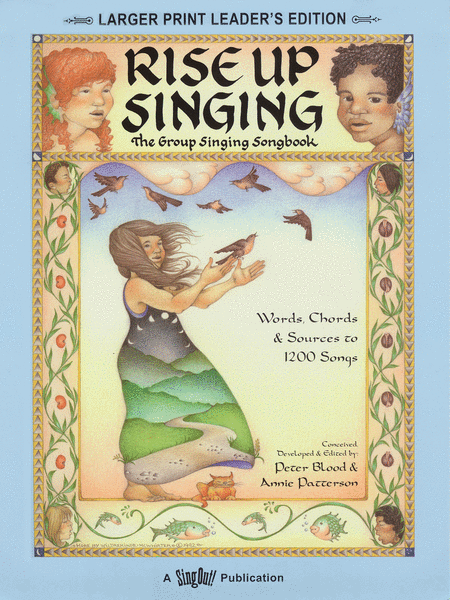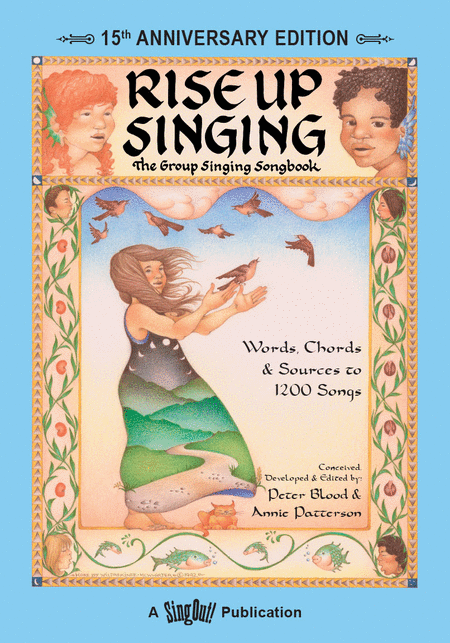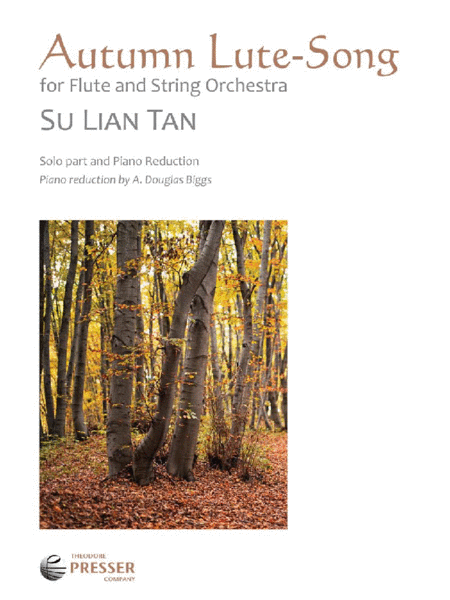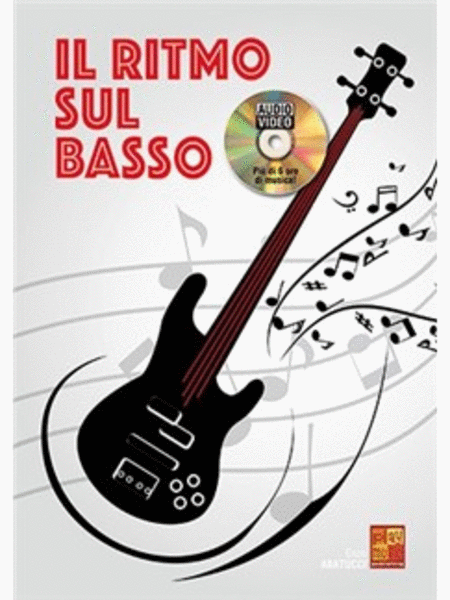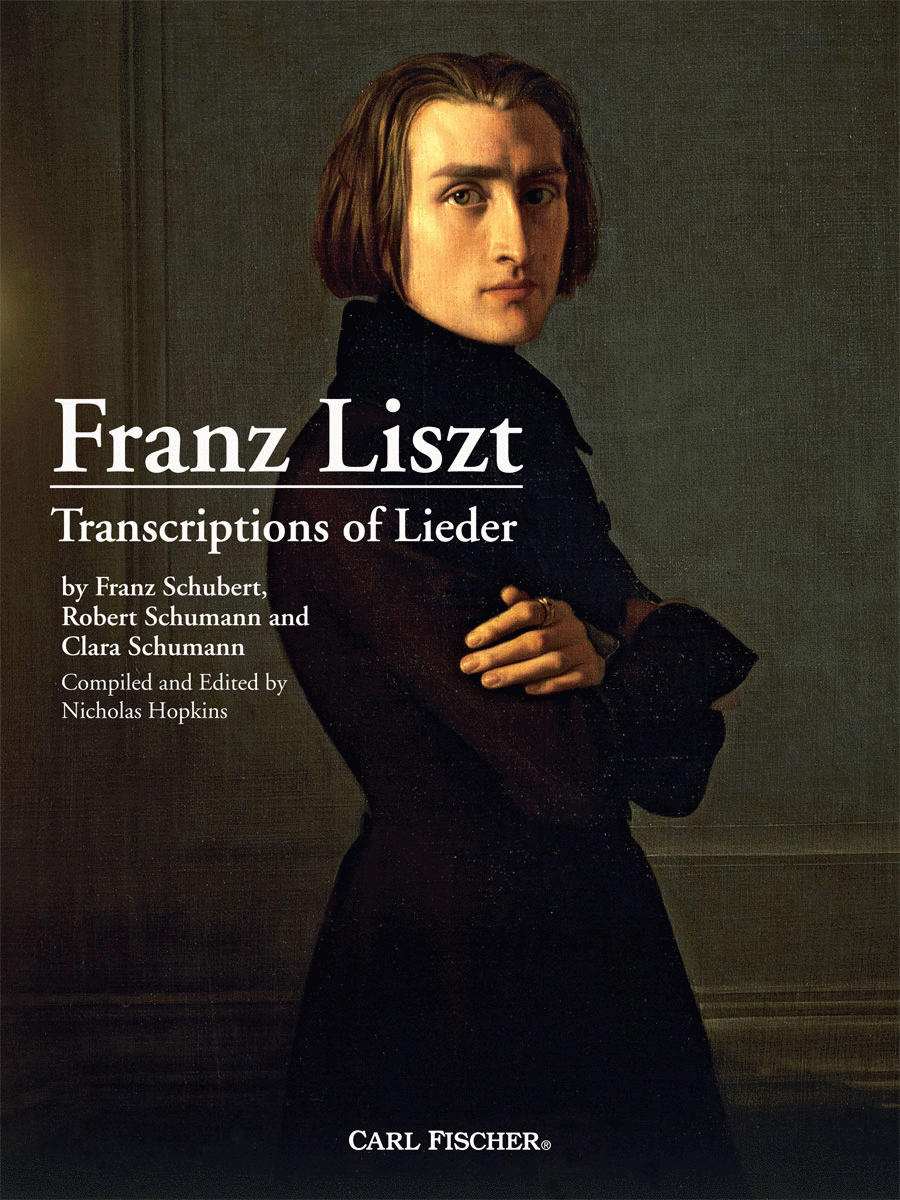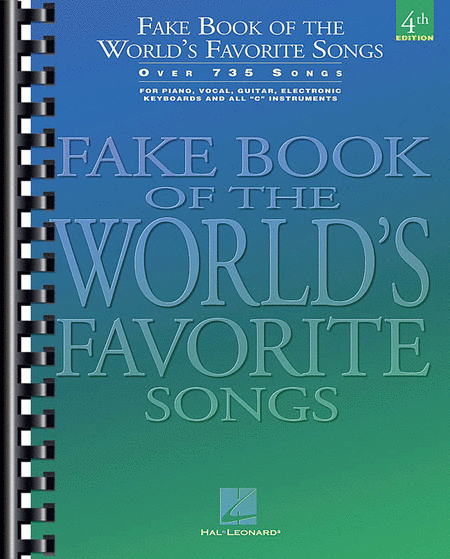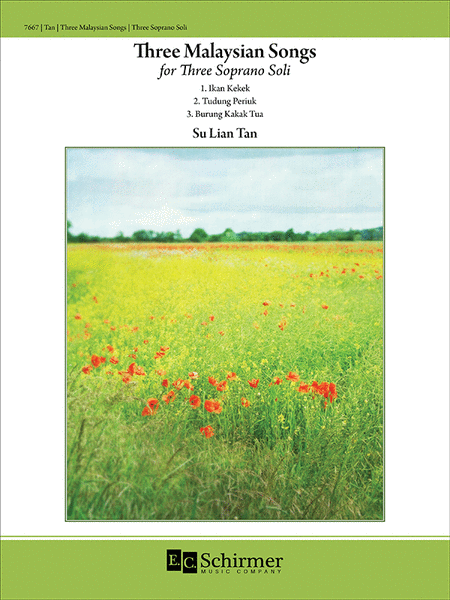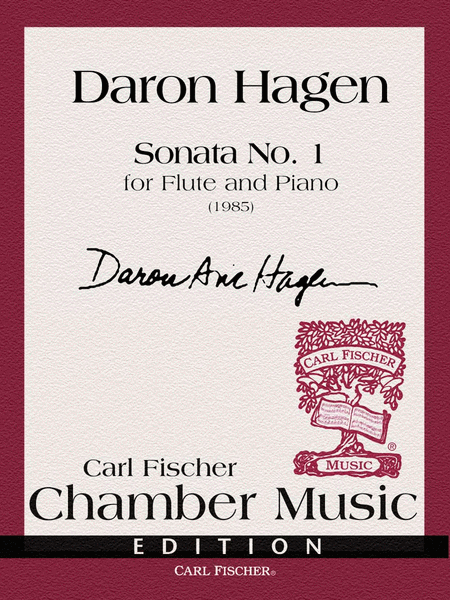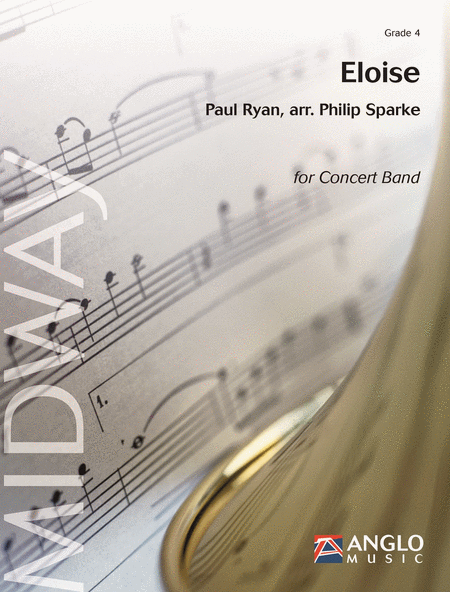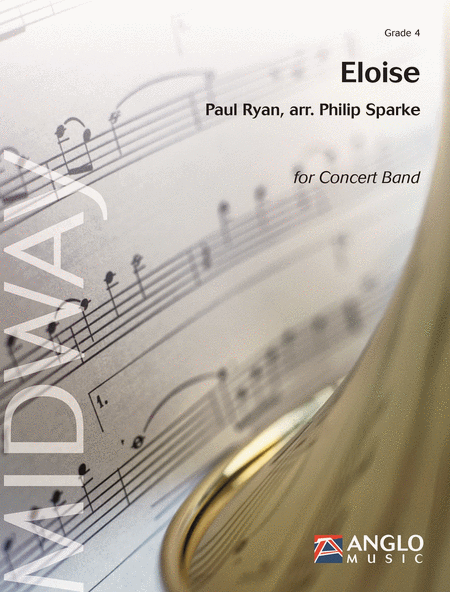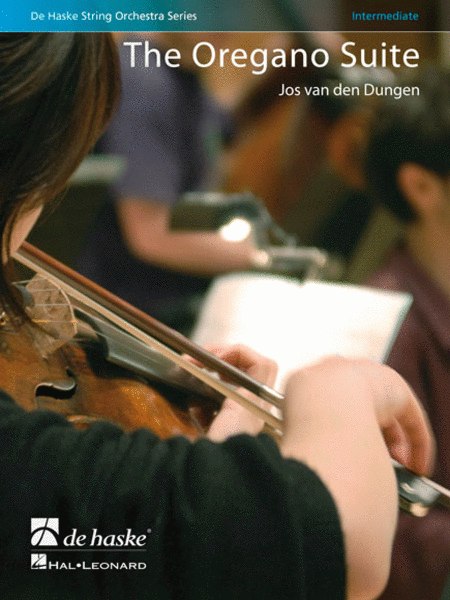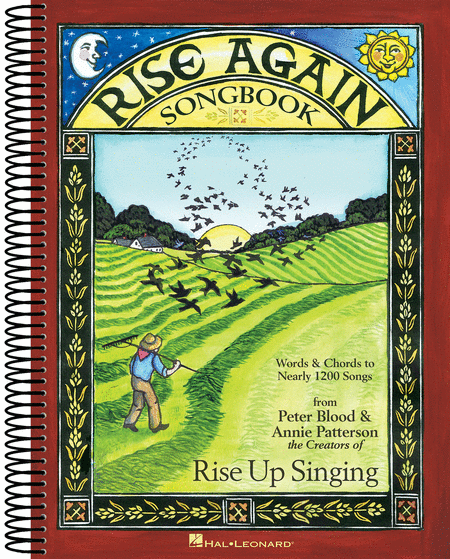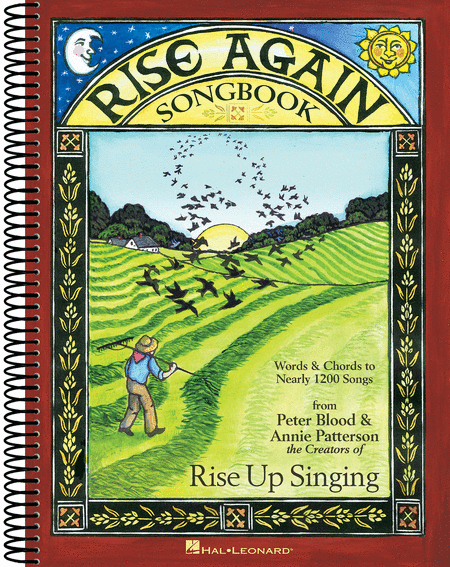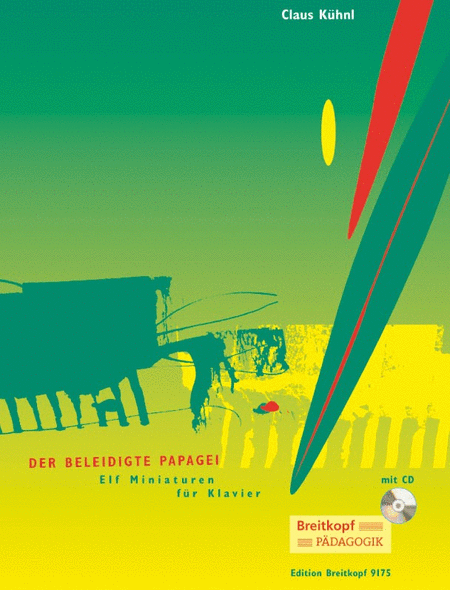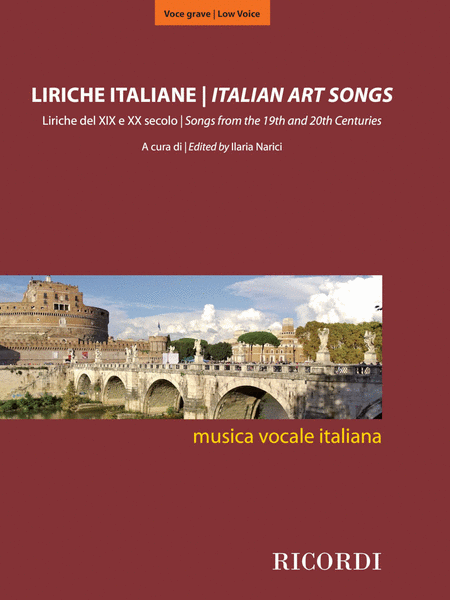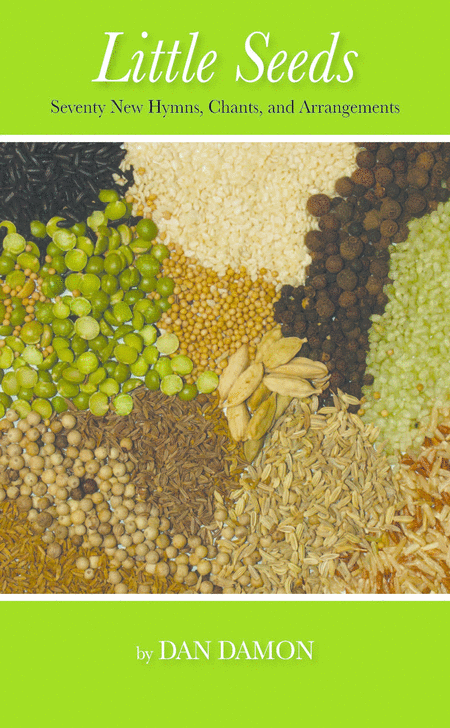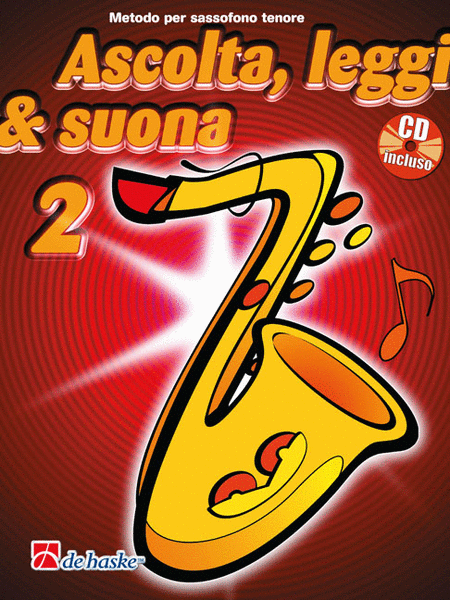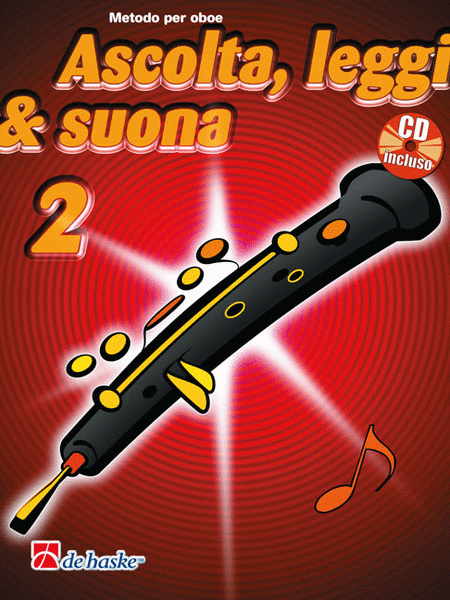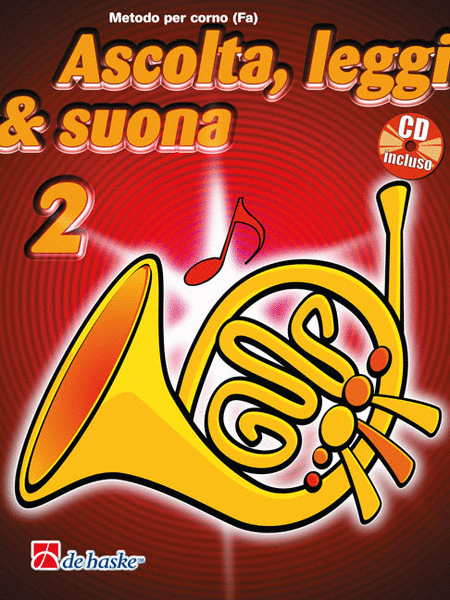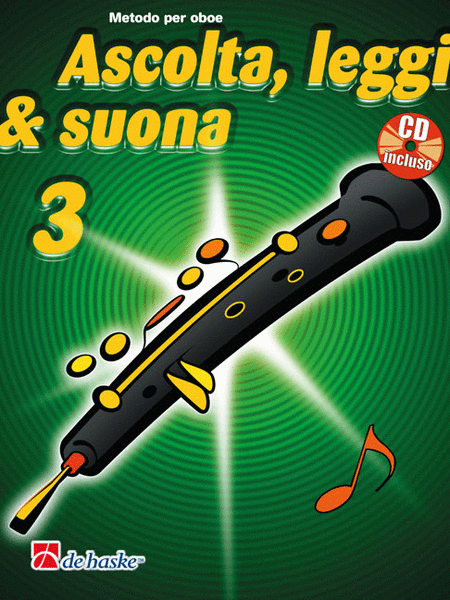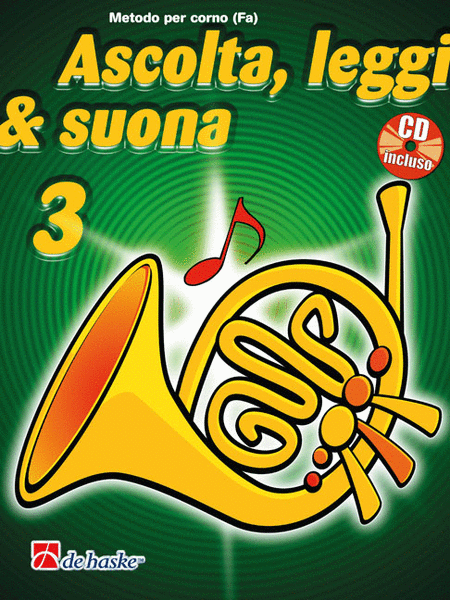|
| Rise Up Singing
Paroles et Accords [Partition]
Hal Leonard
The Group Singing Songbook. By Various. Vocal. Size 9.5x12 inches. 281 pages. Pu...(+)
The Group Singing
Songbook. By Various.
Vocal. Size 9.5x12
inches. 281 pages.
Published by Hal Leonard.
(1)$39.99 - Voir plus => AcheterDélais: 24 hours - In Stock | | | |
| Rise Up Singing
Paroles et Accords [Partition]
Hal Leonard
Arranged by Peter Blood, Annie Patterson. Vocal. Size 7.5x10.5 inches. 283 pages...(+)
Arranged by Peter Blood,
Annie Patterson. Vocal.
Size 7.5x10.5 inches. 283
pages. Published by Hal
Leonard.
(1)$34.99 - Voir plus => AcheterDélais: 24 hours - In Stock | | | |
| Autumn Lute-Song
Flûte traversière et Piano
Theodore Presser Co.
For Solo Flute And Piano Reduction. Composed by Su Lian Tan. Premiered at...(+)
For Solo Flute And
Piano Reduction.
Composed by Su Lian Tan.
Premiered at the Yong
Siew Toh Conservatory of
Music, Singapore by Su
Lian Tan and pianist John
McDonald. Contemporary.
Solo part with piano
reduction. With Standard
notation. 24 pages.
Duration 12 minutes, 30
seconds. Theodore Presser
Company #114-41720.
Published by Theodore
Presser Company
(PR.114417200).
$22.99 - Voir plus => AcheterDélais: 1 to 2 weeks | | | |
| Il Ritmo Sul Basso
Basse electrique [Partition + CD]
Play Music Publishing
Bass Guitar SKU: BT.MUSMI0391 Composed by Enzo Abatucci. Tuition. Book wi...(+)
Bass Guitar SKU:
BT.MUSMI0391 Composed
by Enzo Abatucci.
Tuition. Book with CD.
Composed 2018. Play Music
Italy #MUSMI0391.
Published by Play Music
Italy (BT.MUSMI0391).
Italian. Saper
leggere e suonare un
ritmo fa parte delle basi
che ogni bassista deve
assolutamente
padroneggiare. In realt
molti incontrano
difficolt
nell’interpretazio
ne ritmica di uno
spartito o di un
qualsiasi esercizio
scritto, e sono quindi
incapaci di superare
questo scoglio senza
l’aiuto di un
esempio audio o video
attinente. Questo metodo,
che si rivolge a tutti i
bassisti, dal
principiante al più
avanzato, colmer tutte le
vostre lacune e vi dar
solide basi per
finalmente acquisire o
migliorare il senso del
ritmo. Estremamente
progressiva,
quest’opera
didattica vi far lavorare
su tutte le figure di
ritmo essenziali per
suonare il basso. Ma la
sua vera ricchezza
risiedenel suo approccio
tanto pratico quanto
pienamente musicale. Non
si limita alla teoria. In
effetti per affrontare le
figure ed i ritmi avrete
a che fare con veri
grooves. Il che significa
che lo studio viene
svolto in vere condizioni
musicali cioè con vere
linee di basso da suonare
su diverse basi musicali,
per progredire al livello
ritmico e divertirsi al
livello musicale! Sul
disco dati allegato al
metodo, troverete
numerosi file audio e
video. I video (mp4)
presentano tramite
l’immagine i
numerosi esempi e grooves
così come devono
essere suonati. Le
registrazioni audio (mp3)
invece propongono le basi
musicali corrispondenti
alle diverse linee
studiate. $18.95 - Voir plus => AcheterDélais: 2 to 3 weeks | | | |
| Transcriptions of Lieder
Piano seul
Carl Fischer
Chamber Music Piano SKU: CF.PL1056 Composed by Clara Wieck-Schumann, Fran...(+)
Chamber Music Piano
SKU: CF.PL1056
Composed by Clara
Wieck-Schumann, Franz
Schubert, and Robert
Schumann. Edited by
Nicholas Hopkins.
Collection. With Standard
notation. 128 pages. Carl
Fischer Music #PL1056.
Published by Carl Fischer
Music (CF.PL1056).
ISBN 9781491153390.
UPC: 680160910892.
Transcribed by Franz
Liszt. Introduction
It is true that Schubert
himself is somewhat to
blame for the very
unsatisfactory manner in
which his admirable piano
pieces are treated. He
was too immoderately
productive, wrote
incessantly, mixing
insignificant with
important things, grand
things with mediocre
work, paid no heed to
criticism, and always
soared on his wings. Like
a bird in the air, he
lived in music and sang
in angelic fashion.
--Franz Liszt, letter to
Dr. S. Lebert (1868) Of
those compositions that
greatly interest me,
there are only Chopin's
and yours. --Franz Liszt,
letter to Robert Schumann
(1838) She [Clara
Schumann] was astounded
at hearing me. Her
compositions are really
very remarkable,
especially for a woman.
There is a hundred times
more creativity and real
feeling in them than in
all the past and present
fantasias by Thalberg.
--Franz Liszt, letter to
Marie d'Agoult (1838)
Chretien Urhan
(1790-1845) was a
Belgian-born violinist,
organist and composer who
flourished in the musical
life of Paris in the
early nineteenth century.
According to various
accounts, he was deeply
religious, harshly
ascetic and wildly
eccentric, though revered
by many important and
influential members of
the Parisian musical
community. Regrettably,
history has forgotten
Urhan's many musical
achievements, the most
important of which was
arguably his pioneering
work in promoting the
music of Franz Schubert.
He devoted much of his
energies to championing
Schubert's music, which
at the time was unknown
outside of Vienna.
Undoubtedly, Urhan was
responsible for
stimulating this
enthusiasm in Franz
Liszt; Liszt regularly
heard Urhan's organ
playing in the
St.-Vincent-de-Paul
church in Paris, and the
two became personal
acquaintances. At
eighteen years of age,
Liszt was on the verge of
establishing himself as
the foremost pianist in
Europe, and this
awakening to Schubert's
music would prove to be a
profound experience.
Liszt's first travels
outside of his native
provincial Hungary were
to Vienna in 1821-1823,
where his father enrolled
him in studies with Carl
Czerny (piano) and
Antonio Salieri (music
theory). Both men had
important involvements
with Schubert; Czerny
(like Urhan) as performer
and advocate of
Schubert's music and
Salieri as his theory and
composition teacher from
1813-1817. Curiously,
Liszt and Schubert never
met personally, despite
their geographical
proximity in Vienna
during these years.
Inevitably, legends later
arose that the two had
been personal
acquaintances, although
Liszt would dismiss these
as fallacious: I never
knew Schubert personally,
he was once quoted as
saying. Liszt's initial
exposure to Schubert's
music was the Lieder,
what Urhan prized most of
all. He accompanied the
tenor Benedict
Randhartinger in numerous
performances of
Schubert's Lieder and
then, perhaps realizing
that he could benefit the
composer more on his own
terms, transcribed a
number of the Lieder for
piano solo. Many of these
transcriptions he would
perform himself on
concert tour during the
so-called Glanzzeit, or
time of splendor from
1839-1847. This publicity
did much to promote
reception of Schubert's
music throughout Europe.
Once Liszt retired from
the concert stage and
settled in Weimar as a
conductor in the 1840s,
he continued to perform
Schubert's orchestral
music, his Symphony No. 9
being a particular
favorite, and is credited
with giving the world
premiere performance of
Schubert's opera Alfonso
und Estrella in 1854. At
this time, he
contemplated writing a
biography of the
composer, which
regrettably remained
uncompleted. Liszt's
devotion to Schubert
would never waver.
Liszt's relationship with
Robert and Clara Schumann
was far different and far
more complicated; by
contrast, they were all
personal acquaintances.
What began as a
relationship of mutual
respect and admiration
soon deteriorated into
one of jealousy and
hostility, particularly
on the Schumann's part.
Liszt's initial contact
with Robert's music
happened long before they
had met personally, when
Liszt published an
analysis of Schumann's
piano music for the
Gazette musicale in 1837,
a gesture that earned
Robert's deep
appreciation. In the
following year Clara met
Liszt during a concert
tour in Vienna and
presented him with more
of Schumann's piano
music. Clara and her
father Friedrich Wieck,
who accompanied Clara on
her concert tours, were
quite taken by Liszt: We
have heard Liszt. He can
be compared to no other
player...he arouses
fright and astonishment.
His appearance at the
piano is indescribable.
He is an original...he is
absorbed by the piano.
Liszt, too, was impressed
with Clara--at first the
energy, intelligence and
accuracy of her piano
playing and later her
compositions--to the
extent that he dedicated
to her the 1838 version
of his Etudes d'execution
transcendante d'apres
Paganini. Liszt had a
closer personal
relationship with Clara
than with Robert until
the two men finally met
in 1840. Schumann was
astounded by Liszt's
piano playing. He wrote
to Clara that Liszt had
played like a god and had
inspired indescribable
furor of applause. His
review of Liszt even
included a heroic
personification with
Napoleon. In Leipzig,
Schumann was deeply
impressed with Liszt's
interpretations of his
Noveletten, Op. 21 and
Fantasy in C Major, Op.
17 (dedicated to Liszt),
enthusiastically
observing that, I feel as
if I had known you twenty
years. Yet a variety of
events followed that
diminished Liszt's glory
in the eyes of the
Schumanns. They became
critical of the cult-like
atmosphere that arose
around his recitals, or
Lisztomania as it came to
be called; conceivably,
this could be attributed
to professional jealousy.
Clara, in particular,
came to loathe Liszt,
noting in a letter to
Joseph Joachim, I despise
Liszt from the depths of
my soul. She recorded a
stunning diary entry a
day after Liszt's death,
in which she noted, He
was an eminent keyboard
virtuoso, but a dangerous
example for the
young...As a composer he
was terrible. By
contrast, Liszt did not
share in these negative
sentiments; no evidence
suggests that he had any
ill-regard for the
Schumanns. In Weimar, he
did much to promote
Schumann's music,
conducting performances
of his Scenes from Faust
and Manfred, during a
time in which few
orchestras expressed
interest, and premiered
his opera Genoveva. He
later arranged a benefit
concert for Clara
following Robert's death,
featuring Clara as
soloist in Robert's Piano
Concerto, an event that
must have been
exhilarating to witness.
Regardless, her opinion
of him would never
change, despite his
repeated gestures of
courtesy and respect.
Liszt's relationship with
Schubert was a spiritual
one, with music being the
one and only link between
the two men. That with
the Schumanns was
personal, with music
influenced by a hero
worship that would
aggravate the
relationship over time.
Nonetheless, Liszt would
remain devoted to and
enthusiastic for the
music and achievements of
these composers. He would
be a vital force in
disseminating their music
to a wider audience, as
he would be with many
other composers
throughout his career.
His primary means for
accomplishing this was
the piano transcription.
Liszt and the
Transcription
Transcription versus
Paraphrase Transcription
and paraphrase were
popular terms in
nineteenth-century music,
although certainly not
unique to this period.
Musicians understood that
there were clear
distinctions between
these two terms, but as
is often the case these
distinctions could be
blurred. Transcription,
literally writing over,
entails reworking or
adapting a piece of music
for a performance medium
different from that of
its original; arrangement
is a possible synonym.
Adapting is a key part of
this process, for the
success of a
transcription relies on
the transcriber's ability
to adapt the piece to the
different medium. As a
result, the pre-existing
material is generally
kept intact, recognizable
and intelligible; it is
strict, literal,
objective. Contextual
meaning is maintained in
the process, as are
elements of style and
form. Paraphrase, by
contrast, implies
restating something in a
different manner, as in a
rewording of a document
for reasons of clarity.
In nineteenth-century
music, paraphrasing
indicated elaborating a
piece for purposes of
expressive virtuosity,
often as a vehicle for
showmanship. Variation is
an important element, for
the source material may
be varied as much as the
paraphraser's imagination
will allow; its purpose
is metamorphosis.
Transcription is adapting
and arranging;
paraphrasing is
transforming and
reworking. Transcription
preserves the style of
the original; paraphrase
absorbs the original into
a different style.
Transcription highlights
the original composer;
paraphrase highlights the
paraphraser.
Approximately half of
Liszt's compositional
output falls under the
category of transcription
and paraphrase; it is
noteworthy that he never
used the term
arrangement. Much of his
early compositional
activities were
transcriptions and
paraphrases of works of
other composers, such as
the symphonies of
Beethoven and Berlioz,
vocal music by Schubert,
and operas by Donizetti
and Bellini. It is
conceivable that he
focused so intently on
work of this nature early
in his career as a means
to perfect his
compositional technique,
although transcription
and paraphrase continued
well after the technique
had been mastered; this
might explain why he
drastically revised and
rewrote many of his
original compositions
from the 1830s (such as
the Transcendental Etudes
and Paganini Etudes) in
the 1850s. Charles Rosen,
a sympathetic interpreter
of Liszt's piano works,
observes, The new
revisions of the
Transcendental Etudes are
not revisions but concert
paraphrases of the old,
and their art lies in the
technique of
transformation. The
Paganini etudes are piano
transcriptions of violin
etudes, and the
Transcendental Etudes are
piano transcriptions of
piano etudes. The
principles are the same.
He concludes by noting,
Paraphrase has shaded off
into
composition...Composition
and paraphrase were not
identical for him, but
they were so closely
interwoven that
separation is impossible.
The significance of
transcription and
paraphrase for Liszt the
composer cannot be
overstated, and the
mutual influence of each
needs to be better
understood. Undoubtedly,
Liszt the composer as we
know him today would be
far different had he not
devoted so much of his
career to transcribing
and paraphrasing the
music of others. He was
perhaps one of the first
composers to contend that
transcription and
paraphrase could be
genuine art forms on
equal par with original
pieces; he even claimed
to be the first to use
these two terms to
describe these classes of
arrangements. Despite the
success that Liszt
achieved with this type
of work, others viewed it
with circumspection and
criticism. Robert
Schumann, although deeply
impressed with Liszt's
keyboard virtuosity, was
harsh in his criticisms
of the transcriptions.
Schumann interpreted them
as indicators that
Liszt's virtuosity had
hindered his
compositional development
and suggested that Liszt
transcribed the music of
others to compensate for
his own compositional
deficiencies.
Nonetheless, Liszt's
piano transcriptions,
what he sometimes called
partitions de piano (or
piano scores), were
instrumental in promoting
composers whose music was
unknown at the time or
inaccessible in areas
outside of major European
capitals, areas that
Liszt willingly toured
during his Glanzzeit. To
this end, the
transcriptions had to be
literal arrangements for
the piano; a Beethoven
symphony could not be
introduced to an
unknowing audience if its
music had been subjected
to imaginative
elaborations and
variations. The same
would be true of the 1833
transcription of
Berlioz's Symphonie
fantastique (composed
only three years
earlier), the
astonishingly novel
content of which would
necessitate a literal and
intelligible rendering.
Opera, usually more
popular and accessible
for the general public,
was a different matter,
and in this realm Liszt
could paraphrase the
original and manipulate
it as his imagination
would allow without
jeopardizing its
reception; hence, the
paraphrases on the operas
of Bellini, Donizetti,
Mozart, Meyerbeer and
Verdi. Reminiscence was
another term coined by
Liszt for the opera
paraphrases, as if the
composer were reminiscing
at the keyboard following
a memorable evening at
the opera. Illustration
(reserved on two
occasions for Meyerbeer)
and fantasy were
additional terms. The
operas of Wagner were
exceptions. His music was
less suited to paraphrase
due to its general lack
of familiarity at the
time. Transcription of
Wagner's music was thus
obligatory, as it was of
Beethoven's and Berlioz's
music; perhaps the
composer himself insisted
on this approach. Liszt's
Lieder Transcriptions
Liszt's initial
encounters with
Schubert's music, as
mentioned previously,
were with the Lieder. His
first transcription of a
Schubert Lied was Die
Rose in 1833, followed by
Lob der Tranen in 1837.
Thirty-nine additional
transcriptions appeared
at a rapid pace over the
following three years,
and in 1846, the Schubert
Lieder transcriptions
would conclude, by which
point he had completed
fifty-eight, the most of
any composer. Critical
response to these
transcriptions was highly
favorable--aside from the
view held by
Schumann--particularly
when Liszt himself played
these pieces in concert.
Some were published
immediately by Anton
Diabelli, famous for the
theme that inspired
Beethoven's variations.
Others were published by
the Viennese publisher
Tobias Haslinger (one of
Beethoven's and
Schubert's publishers in
the 1820s), who sold his
reserves so quickly that
he would repeatedly plead
for more. However,
Liszt's enthusiasm for
work of this nature soon
became exhausted, as he
noted in a letter of 1839
to the publisher
Breitkopf und Hartel:
That good Haslinger
overwhelms me with
Schubert. I have just
sent him twenty-four new
songs (Schwanengesang and
Winterreise), and for the
moment I am rather tired
of this work. Haslinger
was justified in his
demands, for the Schubert
transcriptions were
received with great
enthusiasm. One Gottfried
Wilhelm Fink, then editor
of the Allgemeine
musikalische Zeitung,
observed of these
transcriptions: Nothing
in recent memory has
caused such sensation and
enjoyment in both
pianists and audiences as
these arrangements...The
demand for them has in no
way been satisfied; and
it will not be until
these arrangements are
seen on pianos
everywhere. They have
indeed made quite a
splash. Eduard Hanslick,
never a sympathetic
critic of Liszt's music,
acknowledged thirty years
after the fact that,
Liszt's transcriptions of
Schubert Lieder were
epoch-making. There was
hardly a concert in which
Liszt did not have to
play one or two of
them--even when they were
not listed on the
program. These
transcriptions quickly
became some of his most
sough-after pieces,
despite their extreme
technical demands.
Leading pianists of the
day, such as Clara Wieck
and Sigismond Thalberg,
incorporated them into
their concert programs
immediately upon
publication. Moreover,
the transcriptions would
serve as inspirations for
other composers, such as
Stephen Heller, Cesar
Franck and later Leopold
Godowsky, all of whom
produced their own
transcriptions of
Schubert's Lieder. Liszt
would transcribe the
Lieder of other composers
as well, including those
by Mendelssohn, Chopin,
Anton Rubinstein and even
himself. Robert Schumann,
of course, would not be
ignored. The first
transcription of a
Schumann Lied was the
celebrated Widmung from
Myrten in 1848, the only
Schumann transcription
that Liszt completed
during the composer's
lifetime. (Regrettably,
there is no evidence of
Schumann's regard of this
transcription, or even if
he was aware of it.) From
the years 1848-1881,
Liszt transcribed twelve
of Robert Schumann's
Lieder (including one
orchestral Lied) and
three of Clara (one from
each of her three
published Lieder cycles);
he would transcribe no
other works of these two
composers. The Schumann
Lieder transcriptions,
contrary to those of
Schubert, are literal
arrangements, posing, in
general, far fewer
demands on the pianist's
technique. They are
comparatively less
imaginative in their
treatment of the original
material. Additionally,
they seem to have been
less valued in their day
than the Schubert
transcriptions, and it is
noteworthy that none of
the Schumann
transcriptions bear
dedications, as most of
the Schubert
transcriptions do. The
greatest challenge posed
by Lieder transcriptions,
regardless of the
composer or the nature of
the transcription, was to
combine the vocal and
piano parts of the
original such that the
character of each would
be preserved, a challenge
unique to this form of
transcription. Each part
had to be intact and
aurally recognizable, the
vocal line in particular.
Complications could be
manifold in a Lied that
featured dissimilar
parts, such as Schubert's
Auf dem Wasser zu singen,
whose piano accompaniment
depicts the rocking of
the boat on the
shimmering waves while
the vocal line reflects
on the passing of time.
Similar complications
would be encountered in
Gretchen am Spinnrade, in
which the ubiquitous
sixteenth-note pattern in
the piano's right hand
epitomizes the
ever-turning spinning
wheel over which the
soprano voice expresses
feelings of longing and
heartache. The resulting
transcriptions for solo
piano would place
exceptional demands on
the pianist. The
complications would be
far less imposing in
instances in which voice
and piano were less
differentiated, as in
many of Schumann's Lieder
that Liszt transcribed.
The piano parts in these
Lieder are true
accompaniments for the
voice, providing harmonic
foundation and rhythmic
support by doubling the
vocal line throughout.
The transcriptions, thus,
are strict and literal,
with far fewer demands on
both pianist and
transcriber. In all of
Liszt's Lieder
transcriptions,
regardless of the way in
which the two parts are
combined, the melody
(i.e. the vocal line) is
invariably the focal
point; the melody should
sing on the piano, as if
it were the voice. The
piano part, although
integral to contributing
to the character of the
music, is designed to
function as
accompaniment. A singing
melody was a crucial
objective in
nineteenth-century piano
performance, which in
part might explain the
zeal in transcribing and
paraphrasing vocal music
for the piano. Friedrich
Wieck, father and teacher
of Clara Schumann,
stressed this point
repeatedly in his 1853
treatise Clavier und
Gesang (Piano and Song):
When I speak in general
of singing, I refer to
that species of singing
which is a form of
beauty, and which is a
foundation for the most
refined and most perfect
interpretation of music;
and, above all things, I
consider the culture of
beautiful tones the basis
for the finest possible
touch on the piano. In
many respects, the piano
and singing should
explain and supplement
each other. They should
mutually assist in
expressing the sublime
and the noble, in forms
of unclouded beauty. Much
of Liszt's piano music
should be interpreted
with this concept in
mind, the Lieder
transcriptions and opera
paraphrases, in
particular. To this end,
Liszt provided numerous
written instructions to
the performer to
emphasize the vocal line
in performance, with
Italian directives such
as un poco marcato il
canto, accentuato assai
il canto and ben
pronunziato il canto.
Repeated indications of
cantando,singend and
espressivo il canto
stress the significance
of the singing tone. As
an additional means of
achieving this and
providing the performer
with access to the
poetry, Liszt insisted,
at what must have been a
publishing novelty at the
time, on printing the
words of the Lied in the
music itself. Haslinger,
seemingly oblivious to
Liszt's intent, initially
printed the poems of the
early Schubert
transcriptions separately
inside the front covers.
Liszt argued that the
transcriptions must be
reprinted with the words
underlying the notes,
exactly as Schubert had
done, a request that was
honored by printing the
words above the
right-hand staff. Liszt
also incorporated a
visual scheme for
distinguishing voice and
accompaniment, influenced
perhaps by Chopin, by
notating the
accompaniment in cue
size. His transcription
of Robert Schumann's
Fruhlings Ankunft
features the vocal line
in normal size, the piano
accompaniment in reduced
size, an unmistakable
guide in a busy texture
as to which part should
be emphasized: Example 1.
Schumann-Liszt Fruhlings
Ankunft, mm. 1-2. The
same practice may be
found in the
transcription of
Schumann's An die Turen
will ich schleichen. In
this piece, the performer
must read three staves,
in which the baritone
line in the central staff
is to be shared between
the two hands based on
the stem direction of the
notes: Example 2.
Schumann-Liszt An die
Turen will ich
schleichen, mm. 1-5. This
notational practice is
extremely beneficial in
this instance, given the
challenge of reading
three staves and the
manner in which the vocal
line is performed by the
two hands. Curiously,
Liszt did not use this
practice in other
transcriptions.
Approaches in Lieder
Transcription Liszt
adopted a variety of
approaches in his Lieder
transcriptions, based on
the nature of the source
material, the ways in
which the vocal and piano
parts could be combined
and the ways in which the
vocal part could sing.
One approach, common with
strophic Lieder, in which
the vocal line would be
identical in each verse,
was to vary the register
of the vocal part. The
transcription of Lob der
Tranen, for example,
incorporates three of the
four verses of the
original Lied, with the
register of the vocal
line ascending one octave
with each verse (from low
to high), as if three
different voices were
participating. By the
conclusion, the music
encompasses the entire
range of Liszt's keyboard
to produce a stunning
climactic effect, and the
variety of register of
the vocal line provides a
welcome textural variety
in the absence of the
words. The three verses
of the transcription of
Auf dem Wasser zu singen
follow the same approach,
in which the vocal line
ascends from the tenor,
to the alto and to the
soprano registers with
each verse.
Fruhlingsglaube adopts
the opposite approach, in
which the vocal line
descends from soprano in
verse 1 to tenor in verse
2, with the second part
of verse 2 again resuming
the soprano register;
this is also the case in
Das Wandern from
Mullerlieder. Gretchen am
Spinnrade posed a unique
problem. Since the poem's
narrator is female, and
the poem represents an
expression of her longing
for her lover Faust,
variation of the vocal
line's register, strictly
speaking, would have been
impractical. For this
reason, the vocal line
remains in its original
register throughout,
relentlessly colliding
with the sixteenth-note
pattern of the
accompaniment. One
exception may be found in
the fifth and final verse
in mm. 93-112, at which
point the vocal line is
notated in a higher
register and doubled in
octaves. This sudden
textural change, one that
is readily audible, was a
strategic means to
underscore Gretchen's
mounting anxiety (My
bosom urges itself toward
him. Ah, might I grasp
and hold him! And kiss
him as I would wish, at
his kisses I should
die!). The transcription,
thus, becomes a vehicle
for maximizing the
emotional content of the
poem, an exceptional
undertaking with the
general intent of a
transcription. Registral
variation of the vocal
part also plays a crucial
role in the transcription
of Erlkonig. Goethe's
poem depicts the death of
a child who is
apprehended by a
supernatural Erlking, and
Schubert, recognizing the
dramatic nature of the
poem, carefully depicted
the characters (father,
son and Erlking) through
unique vocal writing and
accompaniment patterns:
the Lied is a dramatic
entity. Liszt, in turn,
followed Schubert's
characterization in this
literal transcription,
yet took it an additional
step by placing the
register of the father's
vocal line in the
baritone range, that of
the son in the soprano
range and that of the
Erlking in the highest
register, options that
would not have been
available in the version
for voice and piano.
Additionally, Liszt
labeled each appearance
of each character in the
score, a means for
guiding the performer in
interpreting the dramatic
qualities of the Lied. As
a result, the drama and
energy of the poem are
enhanced in this
transcription; as with
Gretchen am Spinnrade,
the transcriber has
maximized the content of
the original. Elaboration
may be found in certain
Lieder transcriptions
that expand the
performance to a level of
virtuosity not found in
the original; in such
cases, the transcription
approximates the
paraphrase. Schubert's Du
bist die Ruh, a paradigm
of musical simplicity,
features an uncomplicated
piano accompaniment that
is virtually identical in
each verse. In Liszt's
transcription, the
material is subjected to
a highly virtuosic
treatment that far
exceeds the original,
including a demanding
passage for the left hand
alone in the opening
measures and unique
textural writing in each
verse. The piece is a
transcription in
virtuosity; its art, as
Rosen noted, lies in the
technique of
transformation.
Elaboration may entail an
expansion of the musical
form, as in the extensive
introduction to Die
Forelle and a virtuosic
middle section (mm.
63-85), both of which are
not in the original. Also
unique to this
transcription are two
cadenzas that Liszt
composed in response to
the poetic content. The
first, in m. 93 on the
words und eh ich es
gedacht (and before I
could guess it), features
a twisted chromatic
passage that prolongs and
thereby heightens the
listener's suspense as to
the fate of the trout
(which is ultimately
caught). The second, in
m. 108 on the words
Betrogne an (and my blood
boiled as I saw the
betrayed one), features a
rush of
diminished-seventh
arpeggios in both hands,
epitomizing the poet's
rage at the fisherman for
catching the trout. Less
frequent are instances in
which the length of the
original Lied was
shortened in the
transcription, a tendency
that may be found with
certain strophic Lieder
(e.g., Der Leiermann,
Wasserflut and Das
Wandern). Another
transcription that
demonstrates Liszt's
readiness to modify the
original in the interests
of the poetic content is
Standchen, the seventh
transcription from
Schubert's
Schwanengesang. Adapted
from Act II of
Shakespeare's Cymbeline,
the poem represents the
repeated beckoning of a
man to his lover. Liszt
transformed the Lied into
a miniature drama by
transcribing the vocal
line of the first verse
in the soprano register,
that of the second verse
in the baritone register,
in effect, creating a
dialogue between the two
lovers. In mm. 71-102,
the dialogue becomes a
canon, with one voice
trailing the other like
an echo (as labeled in
the score) at the
distance of a beat. As in
other instances, the
transcription resembles
the paraphrase, and it is
perhaps for this reason
that Liszt provided an
ossia version that is
more in the nature of a
literal transcription.
The ossia version, six
measures shorter than
Schubert's original, is
less demanding
technically than the
original transcription,
thus representing an
ossia of transcription
and an ossia of piano
technique. The Schumann
Lieder transcriptions, in
general, display a less
imaginative treatment of
the source material.
Elaborations are less
frequently encountered,
and virtuosity is more
restricted, as if the
passage of time had
somewhat tamed the
composer's approach to
transcriptions;
alternatively, Liszt was
eager to distance himself
from the fierce
virtuosity of his early
years. In most instances,
these transcriptions are
literal arrangements of
the source material, with
the vocal line in its
original form combined
with the accompaniment,
which often doubles the
vocal line in the
original Lied. Widmung,
the first of the Schumann
transcriptions, is one
exception in the way it
recalls the virtuosity of
the Schubert
transcriptions of the
1830s. Particularly
striking is the closing
section (mm. 58-73), in
which material of the
opening verse (right
hand) is combined with
the triplet quarter notes
(left hand) from the
second section of the
Lied (mm. 32-43), as if
the transcriber were
attempting to reconcile
the different material of
these two sections.
Fruhlingsnacht resembles
a paraphrase by
presenting each of the
two verses in differing
registers (alto for verse
1, mm. 3-19, and soprano
for verse 2, mm. 20-31)
and by concluding with a
virtuosic section that
considerably extends the
length of the original
Lied. The original
tonalities of the Lieder
were generally retained
in the transcriptions,
showing that the tonality
was an important part of
the transcription
process. The infrequent
instances of
transposition were done
for specific reasons. In
1861, Liszt transcribed
two of Schumann's Lieder,
one from Op. 36 (An den
Sonnenschein), another
from Op. 27 (Dem roten
Roslein), and merged
these two pieces in the
collection 2 Lieder; they
share only the common
tonality of A major. His
choice for combining
these two Lieder remains
unknown, but he clearly
recognized that some
tonal variety would be
needed, for which reason
Dem roten Roslein was
transposed to C>= major.
The collection features
An den Sonnenschein in A
major (with a transition
to the new tonality),
followed by Dem roten
Roslein in C>= major
(without a change of key
signature), and
concluding with a reprise
of An den Sonnenschein in
A major. A three-part
form was thus established
with tonal variety
provided by keys in third
relations (A-C>=-A); in
effect, two of Schumann's
Lieder were transcribed
into an archetypal song
without words. In other
instances, Liszt treated
tonality and tonal
organization as important
structural ingredients,
particularly in the
transcriptions of
Schubert's Lieder cycles,
i.e. Schwanengesang,
Winterreise a... $32.99 - Voir plus => AcheterDélais: 1 to 2 weeks | | | |
| Fake Book Of The World's Favorite Songs - C Instruments - 4th Edition
Instruments en Do [Fake Book]
Hal Leonard
For voice and C instrument. Format: fakebook. With vocal melody, lyrics and chor...(+)
For voice and C
instrument. Format:
fakebook. With vocal
melody, lyrics and chord
names. Traditional pop
and vocal standards.
Series: Hal Leonard Fake
Books. 424 pages. 9x12
inches. Published by Hal
Leonard.
(14)$34.99 - Voir plus => AcheterDélais: 24 hours - In Stock | | | |
| Autumn Lute-Song
Theodore Presser Co.
Chamber Music Contrabass, Erhu, Flute, Viola, Violin 1, Violin 2, Violoncello (+)
Chamber Music Contrabass,
Erhu, Flute, Viola,
Violin 1, Violin 2,
Violoncello SKU:
PR.114424150 Composed
by Su Lian Tan. Set of
Score and Parts. Duration
14 minutes. Theodore
Presser Company
#114-42415. Published by
Theodore Presser Company
(PR.114424150). UPC:
680160691654. $47.99 - Voir plus => AcheterDélais: 2 to 3 weeks | | | |
| Orfeo in Asia
Piano seul
Schirmer
| | | |
| Three Malaysian Songs
Voix Soprano
Schirmer
| | | |
| Ming (Brush Strokes)
Schirmer
| | | |
| U-Don Rock
Piano seul
Schirmer
| | | |
| Daron Hagen: Flute Sonata No. 1
Flûte traversière et Piano
Carl Fischer
For Flute and Piano. By Daron Hagen. For Flute Solo, Piano. Carl Fischer Chamber...(+)
For Flute and Piano. By
Daron Hagen. For Flute
Solo, Piano. Carl Fischer
Chamber Music Edition.
First performance: Su
Lian Tan and Elena Ruehr
- March 11, 1986 in the
Paul Recital Hall at
Lincoln Center. Solo part
with piano reduction. 24
pages. Published by Carl
Fischer.
$23.99 - Voir plus => AcheterDélais: 1 to 2 weeks | | | |
| Life in Wayang (Score and parts)
Quatuor à cordes: 2 violons, alto, violoncelle [Conducteur et Parties séparées]
Schirmer
| | | |
| Eloise
Orchestre d'harmonie [Conducteur] - Intermédiaire
Anglo Music
Concert Band/Harmonie - Grade 4 SKU: BT.AMP-149-140 Composed by Paul Ryan...(+)
Concert Band/Harmonie -
Grade 4 SKU:
BT.AMP-149-140
Composed by Paul Ryan.
Arranged by Philip
Sparke. Anglo Music
Midway Series. Pop &
Rock. Score Only.
Composed 2006. Anglo
Music Press #AMP 149-140.
Published by Anglo Music
Press (BT.AMP-149-140).
9x12 inches.
English-German-French-Dut
ch. Paul and Barry
Ryan were identical twin
sons of 1950’s pop
singer Marion Ryan and
were born on 24th October
1948. They were groomed
for stardom and had
started singing as a duo
before their fifteenth
birthday. They were
signed by Decca in 1965
and brilliantly marketed
as clean-cut fashion
icons. Their first single
‘Don’t Bring
Me Your
Heartaches’
reached the UK top twenty
but their success as twin
performers lasted only
three years. In 1968
Barry embarked on a solo
career while Paul
concentrated on writing
and producing. Eloise
with its melodramatic
vocal style and heavily
orchestrated backing was
an early success of this
new collaboration and
went on to be covered by
a variety ofartists,
including punk legends
The Damned.
De
eeneiige tweelingbroers
Paul en Barry Ryan
vormden al een zangduo
voor hun vijftiende
verjaardag. In 1965
tekenden ze een contract
bij Decca en werden ze op
een briljante manier voor
het voetlicht gebracht
als keurige
mode-idolen,maar hun
succes als
tweelingartiesten duurde
slechts drie jaar. In
1968 begon Barry aan een
solocarrière terwijl
Paul zich concentreerde
op het schrijver- en
producerschap.
Eloise, een stevig
georkestreerd,
melodramatischgezongen
nummer, was een vroege en
succesvolle vrucht van
deze samenwerking. De
song werd in de loop der
tijd vertolkt door
diverse
artiesten.
Paul
und Barry Ryan waren die
Zwillingssöhne der
50er-Jahre-Popsängerin
Marion Ryan. Den beiden
Brüdern war eine
Zukunft als Popstars in
die Wiege gelegt. Bereits
vor ihrem 15. Geburtstag
traten sie als Duo auf.
Später verlegte sich
Paul jedoch aufs
Songschreiben und Barry
trat solo auf. Der Hit
Eloise mit seinem
melodramatischen
Gesangsstil und dem stark
orchestrierten
Hintergrund ist ein
Resultat dieser
erfolgreichen
Zusammenarbeit und wurde
in der Folge von
zahlreichen Künstlern
neu interpretiert. Philip
Sparke machte den
Pop-Evergreen nun auch
für Blasorchester
spielbar.
Paul et
Barry Ryan étaient
jumeaux, nés le 24
octobre 1948, fils de la
chanteuse pop des
années 1950 Marion
Ryan. Formés pour la
célébrité, ils
ont commencé chanter
en duo avant l’ ge
de quinze ans. En 1965
ils ont signé un
contrat
d’enregistrement
avec Decca qui a
commercialisé leur
image soignée
d’icônes de la
mode. Leur premier single
Don’t Bring Me
Your Heartaches est
parvenu au top 20 du
hit-parade britannique,
mais leur succès deux
n’a duré que
trois ans. En 1968, Barry
a entrepris une
carrière solo tandis
que Paul s’est
concentré sur la
composition et la
production.
Eloise, avec son
style vocal
mélodramatique et son
accompagnement très
orchestral, étaitun
succès précoce pour
cette nouvelle
collaboration. De
nombreux artistes
l’ont depuis
reprise, telles que les
légendes du punk The
Damned.
Figli
gemelli di Marion Ryan,
celebre cantante pop
degli anni ’50,
Paul e Barry Ryan si
esibivano insieme gi
prima di aver compiuto
quindici anni.Nel 1965
firmano un contratto con
la casa discografica
Decca e commercializzano
con successo la loro
immagine di icone della
moda. Il primo single
entra nelle top 20
britanniche. Nel 1968,
Barry si lancia nella
carriera di solista,
mentre Paul si concentra
sulla composizione e la
produzione.
Eloise, una
canzone dallo stile
vocale melodrammatico che
si sviluppa su un
importante
accompagnamento
orchestrale, è uno dei
primi successi della
collaborazione tra i due
fratelli. $27.95 - Voir plus => AcheterDélais: 2 to 3 weeks | | | |
| Eloise
Orchestre d'harmonie [Conducteur et Parties séparées] - Intermédiaire
Anglo Music
Concert Band/Harmonie - Grade 4 SKU: BT.AMP-149-010 Composed by Paul Ryan...(+)
Concert Band/Harmonie -
Grade 4 SKU:
BT.AMP-149-010
Composed by Paul Ryan.
Arranged by Philip
Sparke. Anglo Music
Midway Series. Pop &
Rock. Set (Score &
Parts). Composed 2006.
Anglo Music Press #AMP
149-010. Published by
Anglo Music Press
(BT.AMP-149-010). 9x12
inches.
English-German-French-Dut
ch. Paul and Barry
Ryan were identical twin
sons of 1950’s pop
singer Marion Ryan and
were born on 24th October
1948. They were groomed
for stardom and had
started singing as a duo
before their fifteenth
birthday. They were
signed by Decca in 1965
and brilliantly marketed
as clean-cut fashion
icons. Their first single
‘Don’t Bring
Me Your
Heartaches’
reached the UK top twenty
but their success as twin
performers lasted only
three years. In 1968
Barry embarked on a solo
career while Paul
concentrated on writing
and producing. Eloise
with its melodramatic
vocal style and heavily
orchestrated backing was
an early success of this
new collaboration and
went on to be covered by
a variety ofartists,
including punk legends
The Damned.
De
eeneiige tweelingbroers
Paul en Barry Ryan
vormden al een zangduo
voor hun vijftiende
verjaardag. In 1965
tekenden ze een contract
bij Decca en werden ze op
een briljante manier voor
het voetlicht gebracht
als keurige
mode-idolen,maar hun
succes als
tweelingartiesten duurde
slechts drie jaar. In
1968 begon Barry aan een
solocarrière terwijl
Paul zich concentreerde
op het schrijver- en
producerschap.
Eloise, een stevig
georkestreerd,
melodramatischgezongen
nummer, was een vroege en
succesvolle vrucht van
deze samenwerking. De
song werd in de loop der
tijd vertolkt door
diverse
artiesten.
Paul
und Barry Ryan waren die
Zwillingssöhne der
50er-Jahre-Popsängerin
Marion Ryan. Den beiden
Brüdern war eine
Zukunft als Popstars in
die Wiege gelegt. Bereits
vor ihrem 15. Geburtstag
traten sie als Duo auf.
Später verlegte sich
Paul jedoch aufs
Songschreiben und Barry
trat solo auf. Der Hit
Eloise mit seinem
melodramatischen
Gesangsstil und dem stark
orchestrierten
Hintergrund ist ein
Resultat dieser
erfolgreichen
Zusammenarbeit und wurde
in der Folge von
zahlreichen Künstlern
neu interpretiert. Philip
Sparke machte den
Pop-Evergreen nun auch
für Blasorchester
spielbar.
Paul et
Barry Ryan étaient
jumeaux, nés le 24
octobre 1948, fils de la
chanteuse pop des
années 1950 Marion
Ryan. Formés pour la
célébrité, ils
ont commencé chanter
en duo avant l’ ge
de quinze ans. En 1965
ils ont signé un
contrat
d’enregistrement
avec Decca qui a
commercialisé leur
image soignée
d’icônes de la
mode. Leur premier single
Don’t Bring Me
Your Heartaches est
parvenu au top 20 du
hit-parade britannique,
mais leur succès deux
n’a duré que
trois ans. En 1968, Barry
a entrepris une
carrière solo tandis
que Paul s’est
concentré sur la
composition et la
production.
Eloise, avec son
style vocal
mélodramatique et son
accompagnement très
orchestral, étaitun
succès précoce pour
cette nouvelle
collaboration. De
nombreux artistes
l’ont depuis
reprise, telles que les
légendes du punk The
Damned.
Figli
gemelli di Marion Ryan,
celebre cantante pop
degli anni ’50,
Paul e Barry Ryan si
esibivano insieme gi
prima di aver compiuto
quindici anni.Nel 1965
firmano un contratto con
la casa discografica
Decca e commercializzano
con successo la loro
immagine di icone della
moda. Il primo single
entra nelle top 20
britanniche. Nel 1968,
Barry si lancia nella
carriera di solista,
mentre Paul si concentra
sulla composizione e la
produzione.
Eloise, una
canzone dallo stile
vocale melodrammatico che
si sviluppa su un
importante
accompagnamento
orchestrale, è uno dei
primi successi della
collaborazione tra i due
fratelli. $140.95 - Voir plus => AcheterDélais: 2 to 3 weeks | | | |
| The Oregano Suite
Orchestre à Cordes [Conducteur et Parties séparées] - Intermédiaire
De Haske Publications
String Orchestra - intermediate SKU: BT.DHP-1094711-070 Composed by Jos V...(+)
String Orchestra -
intermediate SKU:
BT.DHP-1094711-070
Composed by Jos Van Den
Dungen. De Haske String
Orchestra Series. Set
(Score & Parts). Composed
2009. 32 pages. De Haske
Publications #DHP
1094711-070. Published by
De Haske Publications
(BT.DHP-1094711-070).
ISBN 9789043131872. 12
X 9 inches.
English-German-French-Dut
ch. The De Haske
String Orchestra
Series offers
attractive pieces
especially composed and
arranged for string
orchestras. Students and
teachers are treated to a
great variety of musical
styles. Each part
presents a challenge to
the player. The Viola
part can be replaced by a
3rd Violin part, and the
Double bass part can be
replaced by a 2nd Cello
part. The Piano part is
mainly meant for support,
but it occasionally adds
new motifs as well.
The Oregano Suite
is a flavoursome mix of
delightful Italianate
music.
De De
Haske String Orchestra
Series biedt u
aantrekkelijke, speciaal
voor strijkorkest
gecomponeerde en
gearrangeerde werken. De
stukken zijn geschreven
in verschillende stijlen:
van klassiek en folk tot
moderne, populaire
muziek. Iedere partij is
zo geschreven dat elke
speler in het orkest een
uitdaging heeft. De
partij voor altviool kan
door een derde viool
worden vervangen. De
partij voor contrabas kan
ook door een tweede cello
worden gespeeld. De
pianopartij dient als
ondersteuning, maar voegt
soms ook nieuwe motieven
toe aan de muziek. Jos
van den Dongen liet zich
door Italië inspireren
toen hij deze vierdelige
suite
schreef.
Die
De Haske String
Orchestra Series
bietet attraktive,
speziell fu r
StreichÂorchester
komponierte und
arrangierte Stu cke in
einer stilistischen
Vielfalt von Klassik u
ber Folk bis zu modernen
U-Musikstilen. Jede
Stimme stellt dabei
besondere
Herausforderungen an die
Spieler. Die Violastimme
kann durch eine dritte
Violine und der
Kontrabass durch ein
zweites Cello ersetzt
werden. Die Klavierstimme
dient zur Unterstu tzung,
fu gt aber zuweilen auch
neue Motive hinzu.
The Oregano Suite
ist eine originale,
italienisch inspirierte
Suite in vier
Sätzen.
De
Haske String Orchestra
Series : Les
compositions et les
arrangements réunis
sous ce label sont en
parfait accord avec le
niveau ciblé, et
proposent des styles
très variés. Chaque
publication est
accompagnée d'un
compact disc contenant la
version de
démonstration des
œuvres publiées
dans cette collection.
L’instrumentation
est toujours la
même : Violons 1
& 2, Alto (ou Violon
3), Violoncelle,
Contrebasse (ou
Violoncelle 2) et
Piano. The Oregano
Suite est un
délice de couleurs et
de parfums
d’Italie !
De Haske String
Orchestra Series è una
nuova raccolta pensata
per i suonatori di archi
principianti. Le
composizioni e gli
arrangiamenti raccolti
sotto questa etichetta
sono perfetti per chi
inizia a suonare e
prongono stili variegati.
Ogni pubblicazione è
accompagnata da un CD che
contiene una versione
demo dei brani. La
strumentazione è
sempre la stessa: violino
1 & 2, viola (o
violino 3), violoncello,
contrabbasso (o
violoncello 2) e
piano.Tracce Demo:1.
Spaghetti Blues2. Italian
Bossa3. Tango Verona4.
Sicilienne TarantellaPer
effettuare il download
delle tracce demo, clicca
sul titolo selezionato e
scegli “Salva
come†nel
menu. $45.95 - Voir plus => AcheterDélais: 2 to 3 weeks | | | |
| Eloise
Orchestre d'harmonie [Conducteur] - Intermédiaire
Anglo Music
Full Score Concert Band (Score) - Grade 4 SKU: HL.44007313 Composed by Pa...(+)
Full Score Concert Band
(Score) - Grade 4 SKU:
HL.44007313 Composed
by Paul Ryan. Arranged by
Philip Sparke. Anglo
Music Concert Band.
Concert. Score Only.
Composed 2006. Anglo
Music Press #AMP149.
Published by Anglo Music
Press (HL.44007313).
UPC: 884088245092.
9x12 inches.
English-German-French-Dut
ch. Paul and Barry
Ryan were identical twin
sons of 1950's pop singer
Marion Ryan and were born
on 24th October 1948.
They were groomed for
stardom and had started
singing as a duo before
their fifteenth birthday.
They were signed by Decca
in 1965 and brilliantly
marketed as clean-cut
fashion icons. Their
first single 'Don't Bring
Me Your Heartaches'
reached the UK top twenty
but their success as twin
performers lasted only
three years. In 1968
Barry embarked on a solo
career while Paul
concentrated on writing
and producing. Eloise
with its melodramatic
vocal style and heavily
orchestrated backing was
an early success of this
new collaboration and
went on to be covered by
a variety ofartists,
including punk legends
The Damned.
De
eeneiige tweelingbroers
Paul en Barry Ryan
vormden al een zangduo
voor hun vijftiende
verjaardag. In 1965
tekenden ze een contract
bij Decca en werden ze op
een briljante manier voor
het voetlicht gebracht
als keurige
mode-idolen,maar hun
succes als
tweelingartiesten duurde
slechts drie jaar. In
1968 begon Barry aan een
solocarriere terwijl Paul
zich concentreerde op het
schrijver- en
producerschap.
Eloise, een stevig
georkestreerd,
melodramatischgezongen
nummer, was een vroege en
succesvolle vrucht van
deze samenwerking. De
song werd in de loop der
tijd vertolkt door
diverse
artiesten.
Paul
und Barry Ryan waren die
Zwillingssohne der
50er-Jahre-Popsangerin
Marion Ryan. Den beiden
Brudern war eine Zukunft
als Popstars in die Wiege
gelegt. Bereits vor ihrem
15. Geburtstag traten sie
als Duo auf. Spater
verlegte sich Paul jedoch
aufs Songschreiben und
Barry trat solo auf. Der
Hit Eloise mit
seinem melodramatischen
Gesangsstil und dem stark
orchestrierten
Hintergrund ist ein
Resultat dieser
erfolgreichen
Zusammenarbeit und wurde
in der Folge von
zahlreichen Kunstlern neu
interpretiert. Philip
Sparke machte den
Pop-Evergreen nun auch
fur Blasorchester
spielbar.
Paul et
Barry Ryan etaient
jumeaux, nes le 24
octobre 1948, fils de la
chanteuse pop des annees
1950 Marion Ryan. Formes
pour la celebrite, ils
ont commence a chanter en
duo avant l'age de quinze
ans. En 1965 ils ont
signe un contrat
d'enregistrement avec
Decca qui a commercialise
leur image soignee
d'icones de la mode. Leur
premier single Don't
Bring Me Your
Heartaches est
parvenu au top 20 du
hit-parade britannique,
mais leur succes a deux
n'a dure que trois ans.
En 1968, Barry a
entrepris une carriere
solo tandis que Paul
s'est concentre sur la
composition et la
production.
Eloise, avec son
style vocal
melodramatique et son
accompagnement tres
orchestral, etaitun
succes precoce pour cette
nouvelle collaboration.
De nombreux artistes
l'ont depuis reprise,
telles que les legendes
du punk The Damned.
Figli gemelli di
Marion Ryan, celebre
cantante pop degli anni
'50, Paul e Barry Ryan si
esibivano insieme gia
prima di aver compiuto
quindici anni.Nel 1965
firmano un contratto con
la casa discografica
Decca e commercializzano
con successo la loro
immagine di icone della
moda. Il primo single
entra nelle top 20
britanniche. Nel 1968,
Barry si lancia nella
carriera di solista,
mentre Paul si concentra
sulla composizione e la
produzione.
Eloise, una
canzone dallo stile
vocale melodrammatico che
si sviluppa su un
importante
accompagnamento
orchestrale, e uno dei
primi successi della
collaborazione tra i due
fratelli. $26.00 - Voir plus => AcheterDélais: 2 to 3 weeks | | | |
| Rise Again Songbook
Paroles et Accords
Hal Leonard
(Words and Chords to Nearly 1200 Songs 9x12 Spiral Bound). Edited by Annie Patte...(+)
(Words and Chords to
Nearly 1200 Songs 9x12
Spiral Bound). Edited by
Annie Patterson and Peter
Blood. For Vocal. Vocal.
Softcover. 304 pages.
Published by Hal Leonard
$39.99 - Voir plus => AcheterDélais: 24 hours - In Stock | | | |
| Rise Again Songbook
Hal Leonard
(Words and Chords to Nearly 1200 Songs Spiral-Bound). Edited by Annie Patterson ...(+)
(Words and Chords to
Nearly 1200 Songs
Spiral-Bound). Edited by
Annie Patterson and Peter
Blood. For Vocal. Vocal.
Softcover. 304 pages.
Published by Hal Leonard
$34.99 - Voir plus => AcheterDélais: 24 hours - In Stock | | | |
| Der beleidigte Papagei
Piano seul [Partition + CD]
Breitkopf & Härtel
11 Miniaturen. Composed by Claus Kuhnl. Edition Breitkopf. In these eleven s...(+)
11 Miniaturen. Composed
by
Claus Kuhnl. Edition
Breitkopf.
In these eleven short
piano
pieces, the composer
follows
the cue of such
modern-day
masters as Olivier
Messiaen,
Karlheinz Stockhausen,
Helmut
Lachenmann and Nicolaus
A.
Huber.
Pedagogical. Breitkopf
and
Haertel #EB-9175.
Published
by Breitkopf and Haertel
$28.95 - Voir plus => AcheterDélais: 3 to 4 weeks | | | |
| Italian Art Songs
Piano, Voix
Ricordi
48 Songs from the 19th and 20th Centuries - Medium/Low Voice. Composed by...(+)
48 Songs from the 19th
and 20th Centuries -
Medium/Low Voice.
Composed by Various.
Edited by Ilaria Narici.
Vocal Collection.
Classical, Italian.
Softcover. 244 pages.
Ricordi #NR141462.
Published by Ricordi
(HL.50600668).
$24.99 - Voir plus => AcheterDélais: 24 hours - In Stock | | | |
| Little Seeds
Hope Publishing Company
Piano and congregation SKU: HP.9085 Composed by Daniel Charles Damon. Aut...(+)
Piano and congregation
SKU: HP.9085
Composed by Daniel
Charles Damon. Author
Collections. General
Worship. Hymn Collection.
144 pages. Hope
Publishing Company #9085.
Published by Hope
Publishing Company
(HP.9085). UPC:
763628190859. In
Little Seeds you will
find new hymns from my
heart. My devotional life
is given to you in my
hymnwriting. During the
past three years I have
been writing songs for
the unity of the church -
songs reminding us of our
baptism. I have been
writing biblical story
hymns for lesser-known
characters. I have
written paperless songs
that may be easily
memorized. I set a Rumi
poem. There are new hymns
for Christian missions
from everywhere to
everywhere. You will find
new texts and musical
settings for folk songs
from around the world. I
hope I have treated these
with the love and respect
they deserve. You will
find alternate
arrangements of some
songs that may be useful
in different settings.
Lim Swee Hong composed
three tunes for this
collection at my request.
I am also pleased to
include Lianne Tan's
first published hymn tune
in Little Seeds. $11.95 - Voir plus => AcheterDélais: 4 to 6 business days | | | |
| Ascolta, Leggi and Suona 2 sassofono tenore
Saxophone Tenor [Partition + CD]
De Haske Publications
Tenor Saxophone SKU: BT.DHP-1115092-400 Metodo per sassofono tenore(+)
Tenor Saxophone SKU:
BT.DHP-1115092-400
Metodo per sassofono
tenore. Composed by
Jaap Kastelein and
Michiel Oldenkamp.
Ascolta, Leggi e Suona.
Book with CD. Composed
2011. 52 pages. De Haske
Publications #DHP
1115092-400. Published by
De Haske Publications
(BT.DHP-1115092-400).
ISBN 9789043135306.
9x12 inches.
Italian. A tutti
coloro che cercano un
nuovo strumento
pedagogico per imparare a
suonare, la casa editrice
musicale De Haske propone
i metodi della serie
ASCOLTA, LEGGI and SUONA,
unâ??opera educativa e
ludica con
accompagnamento su
CD.Questi metodi attuano
un processo decisamente
aperto, gratificante e
moderno per rivoluzionare
lâ??insegnamento
musicale: attraverso
lâ??ascolto, la lettura
e lâ??interpretazione
dei singoli esercizi, dei
giochi e dei quiz potrete
imparare divertendovi.
Ogni singolo esercizio
prevede lâ??esecuzione
con accompagnamento di
una vera band sul CD! In
più troverete tante
notizie sulla storia del
vostro strumento, sugli
interpreti, e sulla
tecnica giusta per
suonare.Sonodisponibli in
italiano i volumi per
tromba, clarinetto,
saxofono contralto e
flauto. Per tutti gli
altri strumenti, il
metodo è disponible in
inglese. $26.95 - Voir plus => AcheterDélais: 2 to 3 weeks | | | |
| Ascolta, Leggi & Suona 2 oboe
Hautbois [Partition + CD]
De Haske Publications
Oboe SKU: BT.DHP-1115095-400 Metodo per oboe. Composed by Jaap Kas...(+)
Oboe SKU:
BT.DHP-1115095-400
Metodo per oboe.
Composed by Jaap
Kastelein and Nynke
Jaarsma. Ascolta, Leggi e
Suona. Book with CD.
Composed 2011. 52 pages.
De Haske Publications
#DHP 1115095-400.
Published by De Haske
Publications
(BT.DHP-1115095-400).
ISBN 9789043135337.
9x12 inches.
Italian. A tutti
coloro che cercano un
nuovo strumento
pedagogico per imparare a
suonare, la casa editrice
musicale De Haske propone
i metodi della serie
ASCOLTA, LEGGI & SUONA,
un’opera educativa
e ludica con
accompagnamento su
CD.Questi metodi attuano
un processo decisamente
aperto, gratificante e
moderno per rivoluzionare
l’insegnamento
musicale: attraverso
l’ascolto, la
lettura e
l’interpretazione
dei singoli esercizi, dei
giochi e dei quiz potrete
imparare divertendovi.
Ogni singolo esercizio
prevede
l’esecuzione con
accompagnamento di una
vera band sul CD! In
più troverete tante
notizie sulla storia del
vostro strumento, sugli
interpreti, e sulla
tecnica giusta per
suonare.Sonodisponibli in
italiano i volumi per
tromba, clarinetto,
saxofono contralto e
flauto. Per tutti gli
altri strumenti, il
metodo è disponible in
inglese. $26.95 - Voir plus => AcheterDélais: 2 to 3 weeks | | | |
| Ascolta, Leggi and Suona 2 corno
Cor [Partition + CD]
De Haske Publications
Horn SKU: BT.DHP-1115098-400 Metodo per corno. Composed by Jaap Ka...(+)
Horn SKU:
BT.DHP-1115098-400
Metodo per corno.
Composed by Jaap
Kastelein and Petra
Botma-Zijlstra. Ascolta,
Leggi e Suona. Book with
CD. Composed 2011. 52
pages. De Haske
Publications #DHP
1115098-400. Published by
De Haske Publications
(BT.DHP-1115098-400).
ISBN 9789043135368.
9x12 inches.
Italian. A tutti
coloro che cercano un
nuovo strumento
pedagogico per imparare a
suonare, la casa editrice
musicale De Haske propone
i metodi della serie
ASCOLTA, LEGGI and SUONA,
unâ??opera educativa e
ludica con
accompagnamento su
CD.Questi metodi attuano
un processo decisamente
aperto, gratificante e
moderno per rivoluzionare
lâ??insegnamento
musicale: attraverso
lâ??ascolto, la lettura
e lâ??interpretazione
dei singoli esercizi, dei
giochi e dei quiz potrete
imparare divertendovi.
Ogni singolo esercizio
prevede lâ??esecuzione
con accompagnamento di
una vera band sul CD! In
più troverete tante
notizie sulla storia del
vostro strumento, sugli
interpreti, e sulla
tecnica giusta per
suonare.Sonodisponibli in
italiano i volumi per
tromba, clarinetto,
saxofono contralto e
flauto. Per tutti gli
altri strumenti, il
metodo è disponible in
inglese. $26.95 - Voir plus => AcheterDélais: 2 to 3 weeks | | | |
| Ascolta, Leggi and Suona 3 oboe
Hautbois [Partition + CD]
De Haske Publications
Oboe SKU: BT.DHP-1115096-400 Metodo per oboe. Composed by Jaap Kas...(+)
Oboe SKU:
BT.DHP-1115096-400
Metodo per oboe.
Composed by Jaap
Kastelein and Nynke
Jaarsma. Ascolta, Leggi e
Suona. Book with CD.
Composed 2011. 52 pages.
De Haske Publications
#DHP 1115096-400.
Published by De Haske
Publications
(BT.DHP-1115096-400).
ISBN 9789043135344.
9x12 inches.
Italian. A tutti
coloro che cercano un
nuovo strumento
pedagogico per imparare a
suonare, la casa editrice
musicale De Haske propone
i metodi della serie
ASCOLTA, LEGGI and SUONA,
unâ??opera educativa e
ludica con
accompagnamento su
CD.Questi metodi attuano
un processo decisamente
aperto, gratificante e
moderno per rivoluzionare
lâ??insegnamento
musicale: attraverso
lâ??ascolto, la lettura
e lâ??interpretazione
dei singoli esercizi, dei
giochi e dei quiz potrete
imparare divertendovi.
Ogni singolo esercizio
prevede lâ??esecuzione
con accompagnamento di
una vera band sul CD! In
più troverete tante
notizie sulla storia del
vostro strumento, sugli
interpreti, e sulla
tecnica giusta per
suonare.Sonodisponibli in
italiano i volumi per
tromba, clarinetto,
saxofono contralto e
flauto. Per tutti gli
altri strumenti, il
metodo è disponible in
inglese. $26.95 - Voir plus => AcheterDélais: 2 to 3 weeks | | | |
| Ascolta, Leggi and Suona 3 corno
Cor [Partition + CD]
De Haske Publications
Horn SKU: BT.DHP-1115099-400 Metodo per corno. Composed by Jaap Ka...(+)
Horn SKU:
BT.DHP-1115099-400
Metodo per corno.
Composed by Jaap
Kastelein and Petra
Botma-Zijlstra. Ascolta,
Leggi e Suona. Method.
Book with CD. Composed
2011. 52 pages. De Haske
Publications #DHP
1115099-400. Published by
De Haske Publications
(BT.DHP-1115099-400).
ISBN 9789043135375.
9x12 inches.
Italian. A tutti
coloro che cercano un
nuovo strumento
pedagogico per imparare a
suonare, la casa editrice
musicale De Haske propone
i metodi della serie
ASCOLTA, LEGGI and SUONA,
unâ??opera educativa e
ludica con
accompagnamento su
CD.Questi metodi attuano
un processo decisamente
aperto, gratificante e
moderno per rivoluzionare
lâ??insegnamento
musicale: attraverso
lâ??ascolto, la lettura
e lâ??interpretazione
dei singoli esercizi, dei
giochi e dei quiz potrete
imparare divertendovi.
Ogni singolo esercizio
prevede lâ??esecuzione
con accompagnamento di
una vera band sul CD! In
più troverete tante
notizie sulla storia del
vostro strumento, sugli
interpreti, e sulla
tecnica giusta per
suonare.Sonodisponibli in
italiano i volumi per
tromba, clarinetto,
saxofono contralto e
flauto. Per tutti gli
altri strumenti, il
metodo è disponible in
inglese. $26.95 - Voir plus => AcheterDélais: 2 to 3 weeks | | |
|
